|
Thread Number: 25004
How the hell does this work? |
[Down to Last] |
Post# 386126 10/18/2009 at 13:38 (5,304 days old) by bajaespuma  (Connecticut) (Connecticut) |
||
 | ||

|
Post# 386127 , Reply# 1 10/18/2009 at 13:42 (5,304 days old) by bajaespuma  (Connecticut) (Connecticut) |
||

It has a "dry" feature that adds 1 hour of irritating time to the wash cycle where the washer seems to be operating with some heat and tumbling and there's a constant trickle of water down the drainpipe. It took me a while to realize that I had translated "Temps de sechage" incorrectly as drying "temperature" when it really meant "drying time". You set the large knob on the left to your desired fabrics/cycle. You then select your desired spin speed and, with the large knob on the right, desired wash temperature. What I then learned is you select desired drying "time" with the "sechage" button and when the wash cycle ends, it goes into a heated tumble cycle that must be like what happens on a condenser dryer, only without any/much air flow.
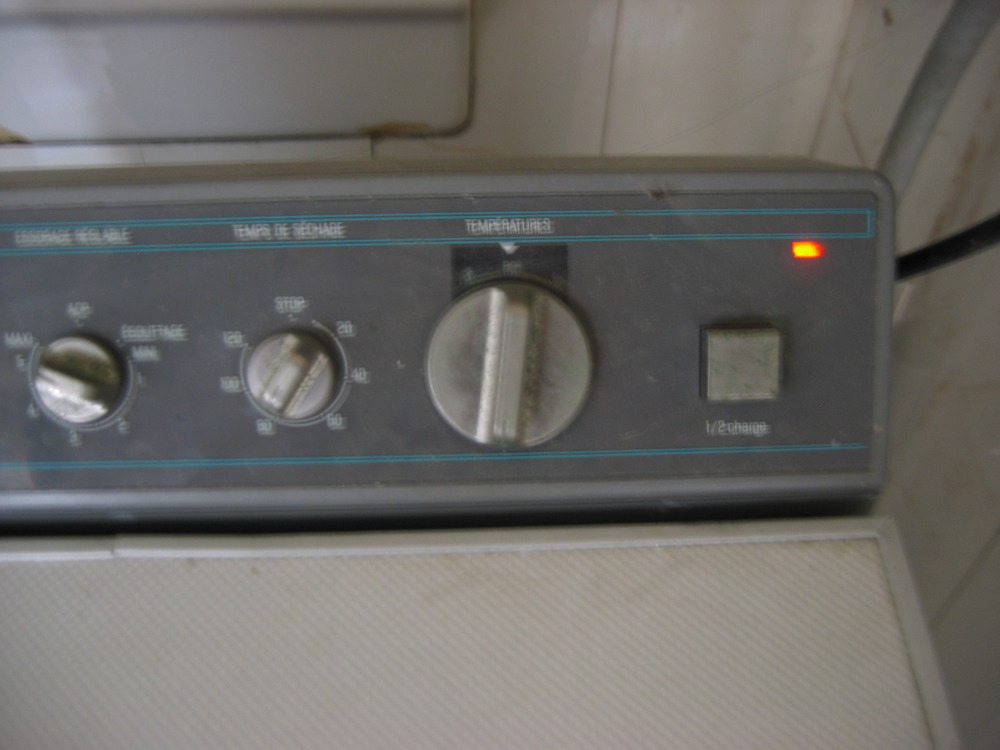
| ||
Post# 386128 , Reply# 2 10/18/2009 at 13:44 (5,304 days old) by bajaespuma  (Connecticut) (Connecticut) |
||
 | ||
Post# 386129 , Reply# 3 10/18/2009 at 13:47 (5,304 days old) by bajaespuma  (Connecticut) (Connecticut) |
||

In most other ways, it was like the top-loading Mieles I had seen in France decades ago. My Brother-in-Law, the PhD. wouldn't accept the fact that the dispensers were for: Pre-wash detergent, Main Wash detergent, Bleach and "Adouccisant", but would instead throw one of these into the tub at the beginning of the cycle:
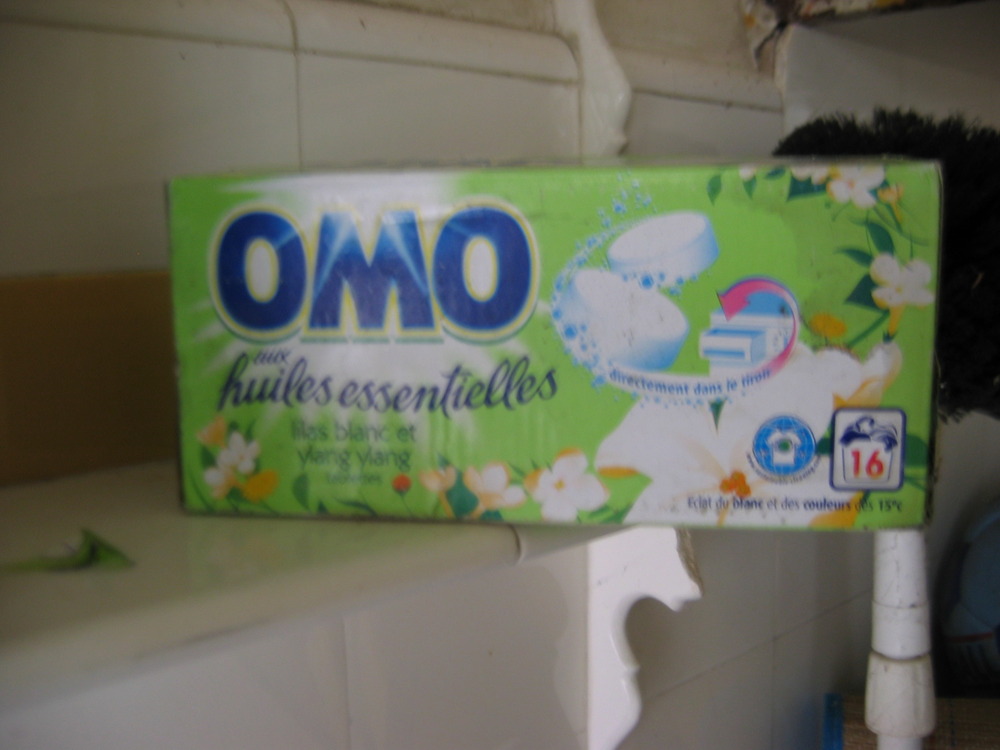
| ||
Post# 386130 , Reply# 4 10/18/2009 at 13:48 (5,304 days old) by bajaespuma  (Connecticut) (Connecticut) |
||
OK, forgive me, I'm kvelling a little bit | ||
Post# 386131 , Reply# 5 10/18/2009 at 13:50 (5,304 days old) by bajaespuma  (Connecticut) (Connecticut) |
||
 | ||
Post# 386132 , Reply# 6 10/18/2009 at 13:54 (5,304 days old) by bajaespuma  (Connecticut) (Connecticut) |
||

I LOVED this stove. Electric grill on the left, two FAST electric burners in the middle and two powerful gas hobs on the right. A large gas oven on the right and a small electric broiler/oven on the left. Couldn't read the brand as the lable had worn off, but I cooked on this two nights and fell in love with it, even though I managed to burn the rice pilaf because I set one of the electric elements on high instead of simmer. Tant pis. This kitchen had one of the largest refrigerator freezers I've seen in a French kitchen, an Arthur Martin(made by Electrolux), and although it worked very well, it was a dorm-style fridge manufactured with a large "Vac-U-form". 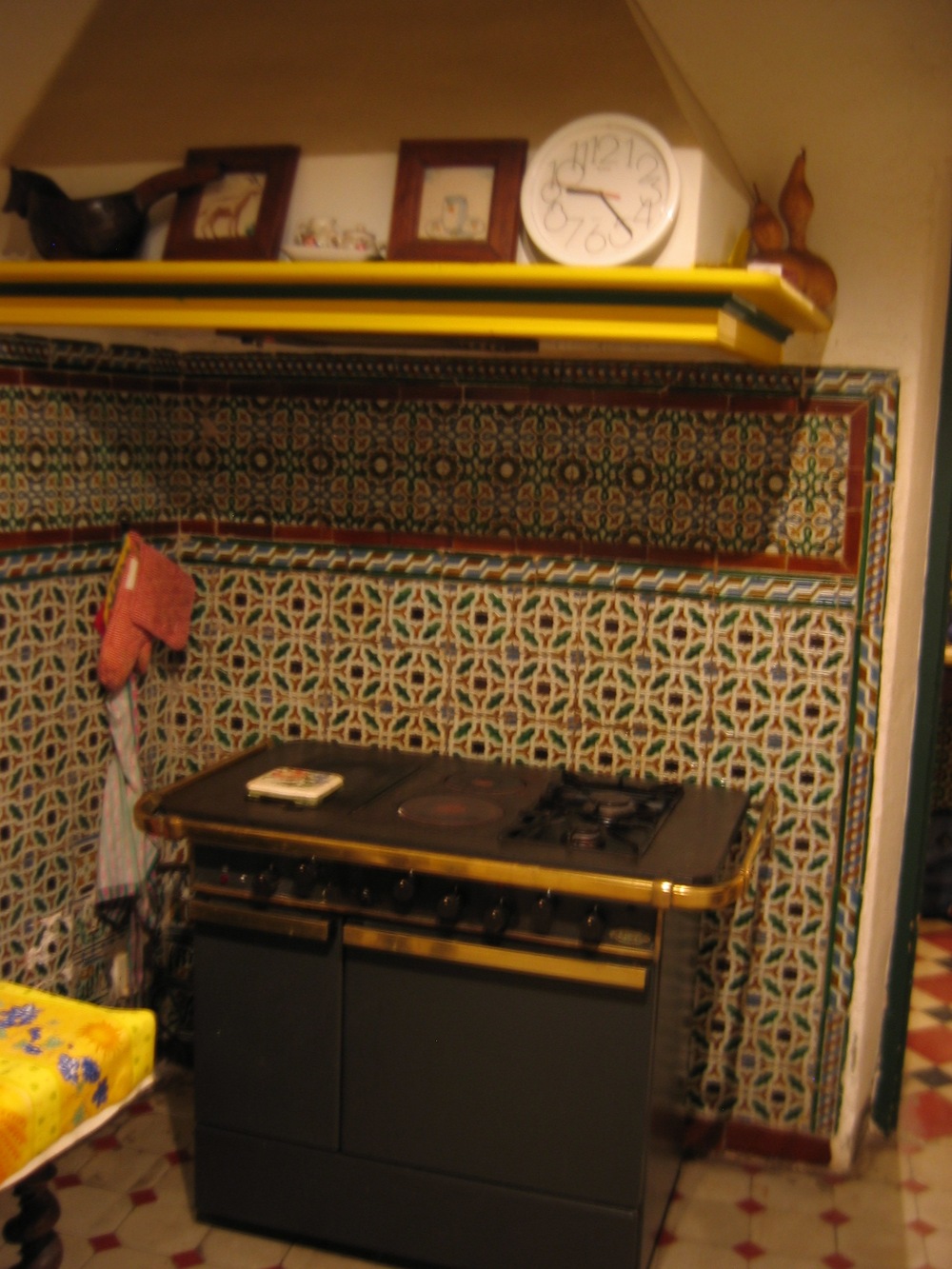
| ||
Post# 386133 , Reply# 7 10/18/2009 at 13:55 (5,304 days old) by bajaespuma  (Connecticut) (Connecticut) |
||
 | ||
Post# 386134 , Reply# 8 10/18/2009 at 13:56 (5,304 days old) by bajaespuma  (Connecticut) (Connecticut) |
||
 | ||
Post# 386135 , Reply# 9 10/18/2009 at 13:57 (5,304 days old) by bajaespuma  (Connecticut) (Connecticut) |
||
 | ||
Post# 386136 , Reply# 10 10/18/2009 at 14:01 (5,304 days old) by bajaespuma  (Connecticut) (Connecticut) |
||

On Saturday, October 10th, 2009, the entire village of Banyuls Sur Mer, was drunk (even the children) from 10 in the morning until early the next day. The whole town ended up on the beach in the afternoon for huge bonfires and lunches of roasted Catalan sausages, Moules, frites and, of course, more wine. They finished off the day with boat races and a nice fireworks show over the harbor. Local sailors aren't hard to look at.
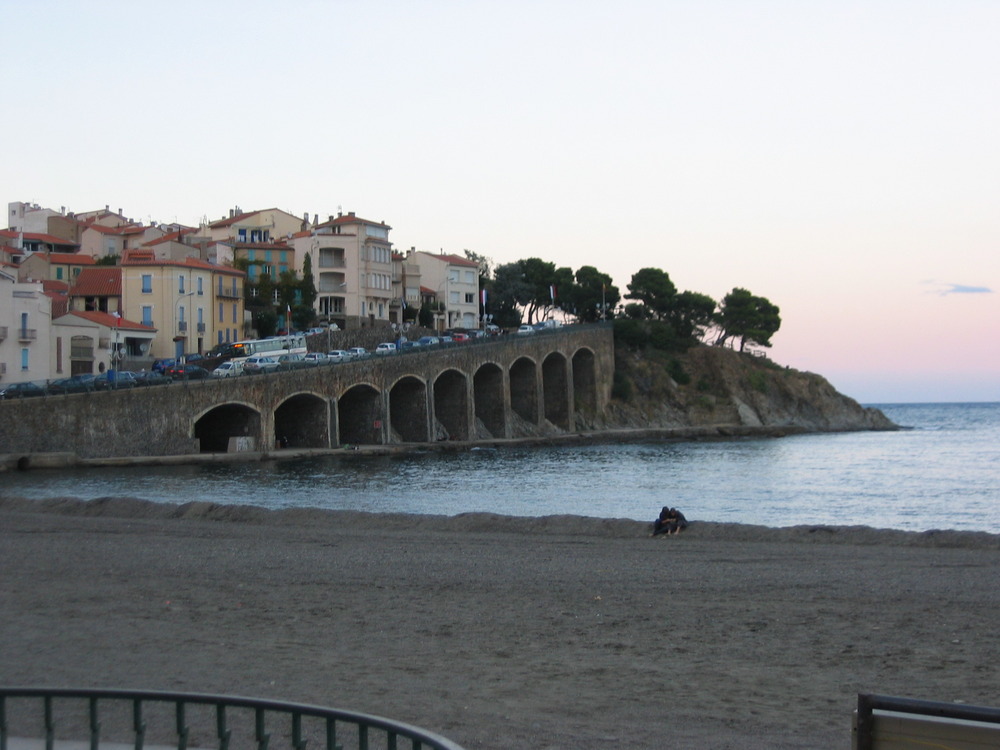
| ||
Post# 386137 , Reply# 11 10/18/2009 at 14:02 (5,304 days old) by logixx  (Germany) (Germany) |
||
 | ||
Post# 386138 , Reply# 12 10/18/2009 at 14:03 (5,304 days old) by logixx  (Germany) (Germany) |
||
 | ||
Post# 386231 , Reply# 16 10/18/2009 at 20:30 (5,303 days old) by bajaespuma  (Connecticut) (Connecticut) |
||
Exactly! | ||
Post# 386283 , Reply# 17 10/19/2009 at 05:26 (5,303 days old) by logixx  (Germany) (Germany) |
||

As stated above, the drying feature on this machine is horrible. - The clothes become super hot. Even after the 20-minute cool-down cycle, the drum is still too hot to touch. - Unless you only load a tiny amount of clothes in there, items will either be wrinkled beyond belief or damp in the center - usually both. - The drying cycle takes ages and, on top of that, consumes lots of water. A two hour cycles uses 60 liters / 16 gallons just for "drying". - Clothes dried in there have a weired smell to them. Alex | ||
Post# 386469 , Reply# 18 10/20/2009 at 03:32 (5,302 days old) by launderess  (Quiet Please, There´s a Lady on Stage) (Quiet Please, There´s a Lady on Stage) |
||
All Combination W/D Units Suffer The Same Basic Problems
There is no getting around that tumble drying laundry requires a large tub diameter than washing for the same weight of textiles. So yes, while one can launder 5kg in a tub, drying will only hold about 2.5, and even then the results are normally poor. Much better to have final high speed spin or a separate extractor/spin dryer, then hang laundry up to dry than waste energy attempting to dry laundry in these combo units. Even if one had to use a small space heater and fan in a room to create a warm breeze to dry laundry, would be faster and probably cheaper energy wise than to run long and multiple loads in a small combo unit. | ||
Post# 386795 , Reply# 24 10/21/2009 at 07:14 (5,301 days old) by chestermikeuk  (Rainhill *Home of the RailwayTrials* Merseyside,UK) (Rainhill *Home of the RailwayTrials* Merseyside,UK) |
||
Frigidaire
Hi Ken, glad you enjoyed your vacation, its a lovely place to visit, did you get to the local village square & markets!!! I remember selling the similar Frigidaire version of this machine, slimline top loader with built in dryer, they made them in 500rpm & 800rpm versions, but then the dryer had three elements (rather like early aristons) that came on to produce a residual heat in the drum (think bake) and then used water to condense the steam!!! took about 3+ hours for a complete wash rinse spin & dry with just half a load!!! 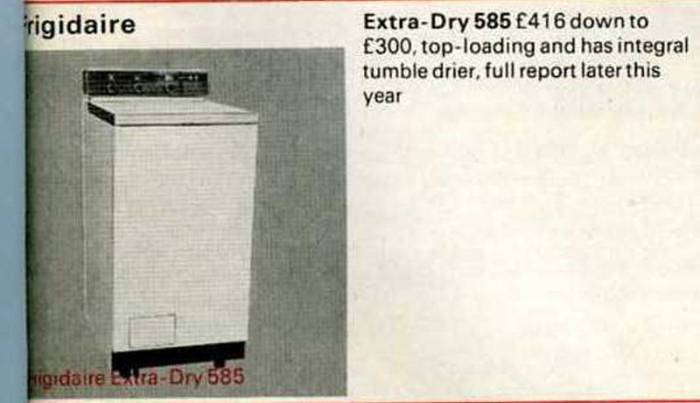
| ||
| Post# 387431 , Reply# 26 10/23/2009 at 06:35 (5,299 days old) by toggleswitch2 () | ||
|
should read "into" not "inot" | ||
| Post# 387466 , Reply# 28 10/23/2009 at 09:27 (5,299 days old) by toggleswitch2 () | ||
|
~Drying in a vented unit while cooking onions would take laundry back to the washer :-) Now that makes PERFECT sense! I've done it and it's bad news! I'm no longer one for hanging laundry to dry in the bathroom either. | ||
| Post# 388138 , Reply# 33 10/26/2009 at 07:09 (5,296 days old) by toggleswitch2 () | ||
|
Pumping Iron Well, Ok. Maybe it's not against my religion to iron. *LOL* 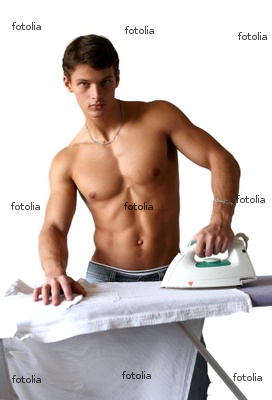
| ||
| Post# 388403 , Reply# 39 10/27/2009 at 04:23 (5,295 days old) by dj-gabriele () | ||
|
BTW: It actually is not-legal to use kWh as an energy measure, you're supposed to use only Joules but as electricity is metered that way, many people use it outside the scientific field, confusing power with energy! (Just like I did wihout noticing) 1kWh = 3,6 MJ | ||
| Post# 388411 , Reply# 40 10/27/2009 at 06:28 (5,295 days old) by toggleswitch2 () | ||
|
. :-) | ||

 Comes to the Rescue!
Comes to the Rescue!